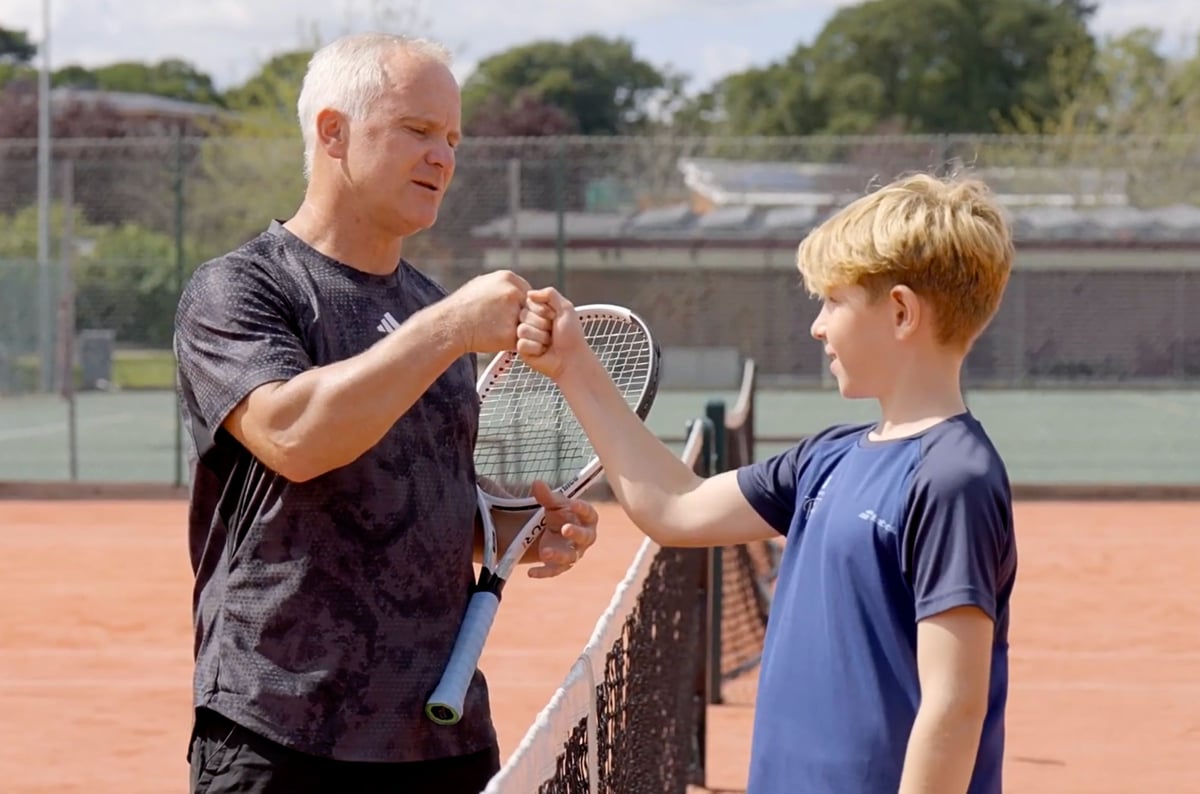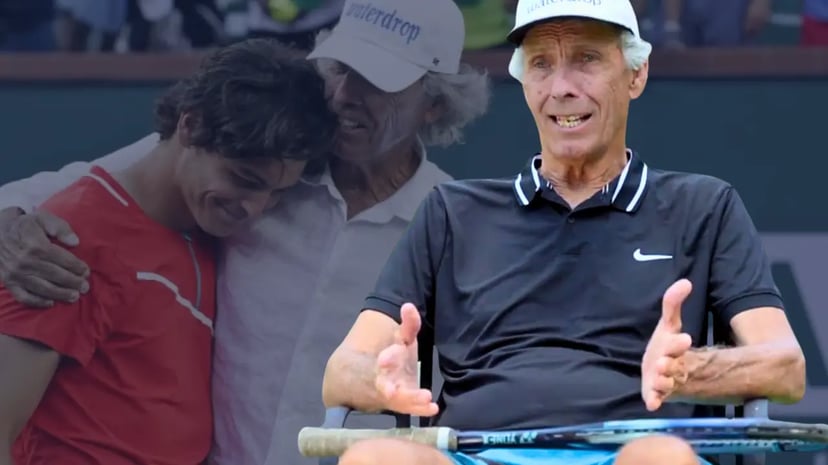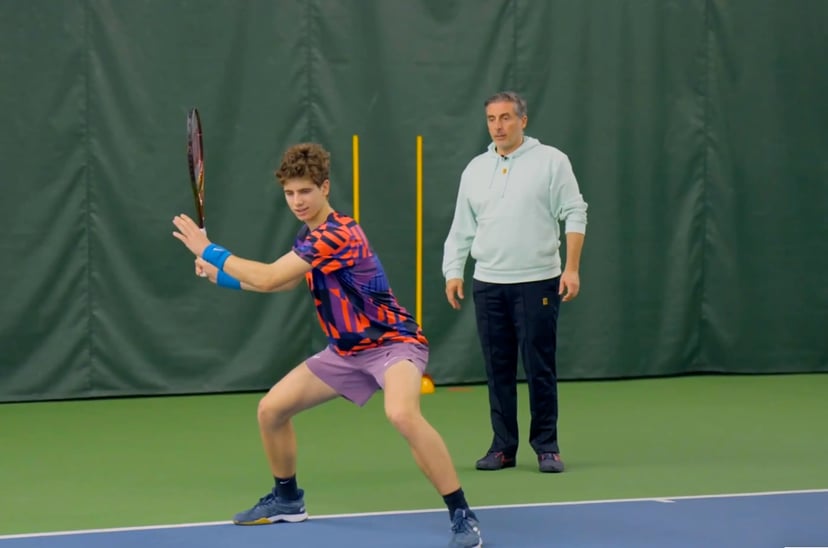
If you’re a parent or coach, you may have noticed a surprising phenomenon during your child’s athletic journey. One day, their technique is flawless, their movements are smooth, and their confidence is high. The next, everything seems off—shots miss the mark, timing is awkward, and frustration sets in. What changed? Often, the culprit is something every young athlete goes through: growth spurts.
Growth spurts can have a profound impact on technical development, causing temporary disruptions to movement, coordination, and consistency. These challenges, though frustrating, are entirely normal. At Coach Life, we’ve brought together some of the greatest junior coaches in the world to share their expertise on managing growth spurts, rebuilding technique, and maintaining long-term development.
How Growth Spurts Affect Technique
Growth spurts don’t just change a child’s height—they alter their entire relationship with the court. Even a small growth of a quarter inch can disrupt a player’s muscle memory, causing once-reliable movements to feel foreign.
Here’s why this happens:
• New Angles: As a child grows, they meet the ball at different heights and angles, which can throw off their timing.
• Muscle Memory Disruption: Movements that were deeply ingrained suddenly feel awkward, requiring time and repetition to readjust.
• Coordination Lag: The body takes time to adapt to new proportions, leading to temporary imbalances in movement and control.
This period can be especially difficult for taller girls who experience rapid growth spurts between the ages of 12 and 15. Boys, while also affected, tend to grow more gradually over a longer period, giving their bodies slightly more time to adjust.
Insights from Sly Black: Growth Spurts of Coco Gauff and Sloane Stephens
Sly Black, the junior coach of Coco Gauff, Sloane Stephens, and 12 junior world number ones, has seen the impact of growth spurts firsthand. In one brilliant video on Coach Life, he discusses how growth spurts affected both Gauff and Stephens as they developed their games.
Sly explains that during their growth phases, their technique and consistency temporarily suffered, which required a return to the fundamentals. For both players, focused repetition through basket-feeding drills helped them regain their muscle memory and adapt to their growing bodies.
CHECK SLY BLACK’S VIDEO ABOUT GROWTH SPURTS
Interestingly, we recently discovered that Sly also spent years as a national coach in China, scouting and developing top players. Among his successes is Qin Wen Zheng, who made the WTA Top 10 last year, won an Olympic gold medal, and was one of five Chinese players Sly helped develop into the world’s Top 100. Stay tuned for an upcoming blog where we’ll explore this incredible chapter of his career.
Rebuilding Technique: Back to Basket Feeding
When growth spurts disrupt a player’s technique, one of the most effective solutions is to return to basket feeding. This controlled, repetitive practice helps young athletes focus on their fundamentals without the added stress of competition or match play.
Why Basket Feeding Works
• It simplifies the environment, allowing players to focus on their technique.
• It reinforces muscle memory through repetition.
• It builds confidence by eliminating the pressure of external factors like movement or strategy.
Gary Stickler, one of Coach Life’s featured experts, has an excellent video on the fundamentals of basket feeding and how to structure sessions effectively.
CHECK GARY STICKLER'S BASKET-FEEDING VIDEO HERE
By dedicating just 30–60 minutes a day to basket feeding, young players can quickly regain their rhythm. Over four to five days, they’ll often see a dramatic improvement as their bodies begin to adapt.
Building Mental Toughness Through Growth Spurts
Growth spurts aren’t just a test of physical development—they’re an opportunity to develop the mental toughness and resilience that every great player needs.
Patience and Perspective
As a parent, it’s essential to stay calm and guide your child through this challenging period. Tennis—and any sport—needs to be about enjoyment. When your child enjoys the game, it doesn’t feel like work, and improvement naturally follows.
Setbacks like missed shots, lost matches, or disrupted technique are part of the journey, not the end of it. This is the perfect time to teach your child how to deal with adversity. Remind them that:
• Setbacks Are Temporary: Growth spurts won’t last forever, and their technique will come back.
• Fortitude Matters: How they respond to challenges now will shape the kind of player they become later.
• Enjoyment Fuels Success: If they stay focused on the love of the game, the work becomes enjoyable, and progress follows.
Calm, Rational Responses Lead to Growth
For players, handling growth spurts calmly and rationally is a critical skill. Whether it’s losing matches or struggling with technique, the key is to stay composed, trust the process, and focus on the long term.
As a parent, you can lead by example. Show your child that there’s no need to panic. By maintaining a positive and supportive attitude, you can help them navigate this phase with confidence and perspective.
The Emotional and Psychological Impact of Growth Spurts
In addition to the physical and technical challenges, growth spurts can take a toll on a player’s confidence and emotions. Frustration, self-doubt, and anxiety about lost progress are common reactions.
What Players and Parents Should Know
1. Stay Patient: Understand that these setbacks are temporary and part of the natural development process.
2. Focus on the Long Term: Encourage players to see this period as an opportunity to rebuild and refine their skills.
3. Avoid Pressure: Both parents and players should avoid placing excessive expectations during this phase.
Support from Coach Life’s Sports Psychologist
Anthony Ross, from Mentally Tough Tennis, has developed resources on Coach Life to help players and parents navigate these emotional challenges. His insights focus on maintaining perspective and building resilience during difficult phases of development.
CHECK ANTHONY ROSS'S SPORTS PSYCHOLOGY CONTENT HERE
Injury Risks During Growth Spurts
Another critical consideration during growth spurts is injury prevention. As young athletes grow, their bones, muscles, and connective tissues are under increased stress. Growth plates, in particular, are more vulnerable during this time.
Insights from Diego Moyano on Serve Speed and Injury
Diego Moyano, a top junior coach featured on Coach Life, highlights the risks associated with rapid growth, especially in boys who experience a sudden increase in serve speed. This can lead to shoulder injuries due to two factors:
1. The growth plates are still developing and are more susceptible to stress.
2. The athlete’s newfound power exceeds what their muscles and joints are ready to handle.
Diego emphasizes the importance of gradually increasing intensity and monitoring workloads during this phase.
CHECK DIEGO MOYANO'S VIDEO ON SERVE SPEED AND INJURIES HERE
Long-Term Development: Building Resilience
Growth spurts may feel like a setback, but they’re also an opportunity to build long-term resilience. Here’s how to approach them effectively:
1. Revisit Fundamentals: Use basket feeding and structured drills to reinforce proper technique.
2. Incorporate Rest and Recovery: Avoid overloading the body, particularly during high-risk periods of growth.
3. Leverage Expert Insights: Tap into the experience of world-class coaches on Coach Life to guide your approach.
Coach Life: Your Resource for Player Development
At Coach Life, we’ve curated a library of expert videos to help parents and players navigate every stage of development, including the challenges of growth spurts. From insights on rebuilding technique to injury prevention and mental toughness, our content is designed to empower athletes and their families.
With advice from coaches like Sly Black, Diego Moyano, and Gary Stickler, as well as psychological support from Anthony Ross, you’ll have all the tools you need to help your child thrive—even during the toughest phases of their growth.
Explore more on Coach Life and unlock the knowledge of some of the world’s best junior coaches.


